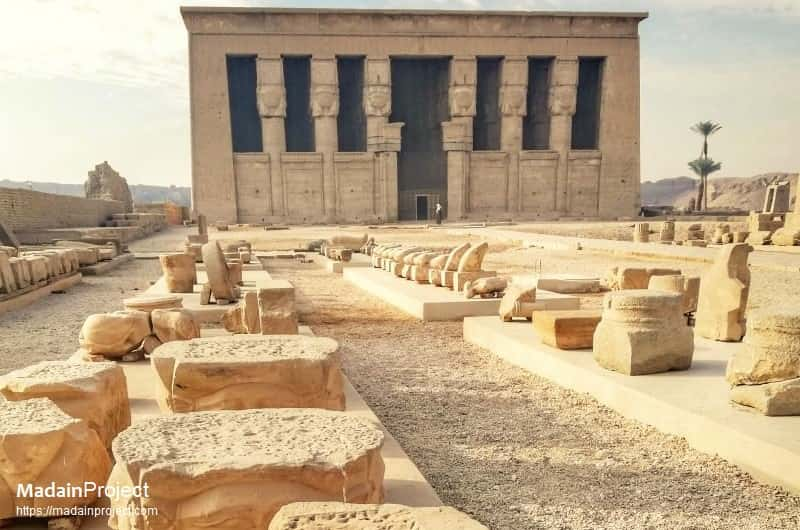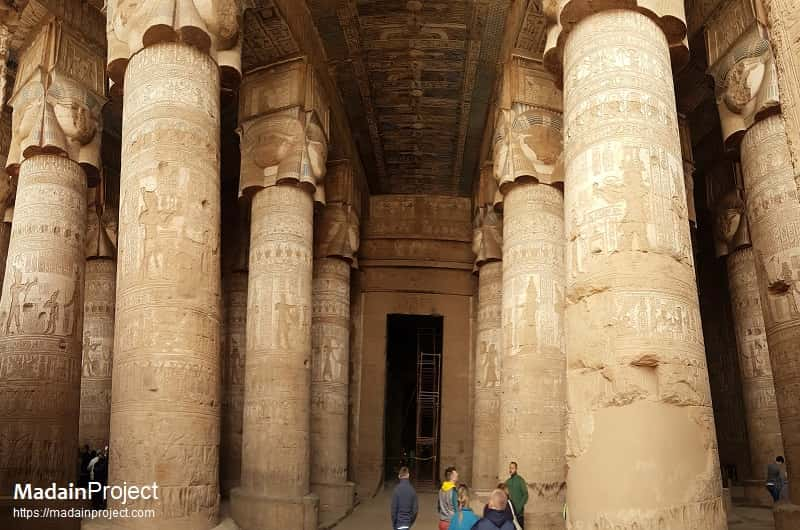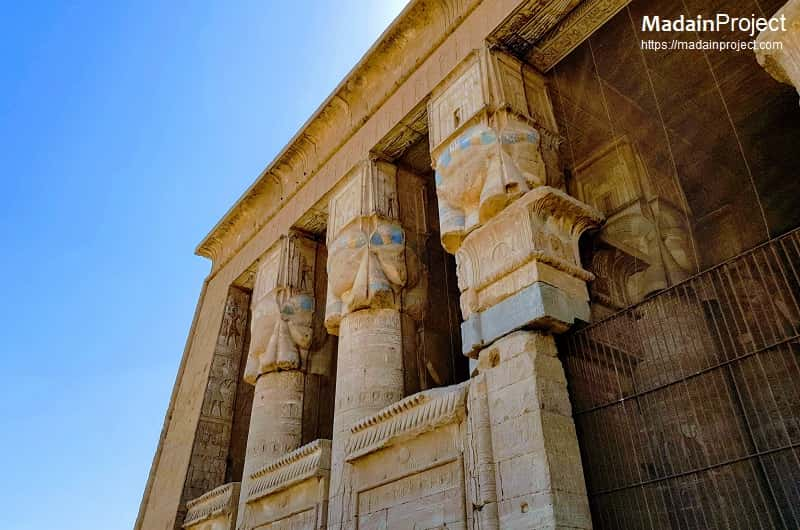Temple of Hathor (2250-1500 BC); also known as Tentyris, Dendera Temple Complex, Kina, Egypt
The Temple of Hathor is the dominant building in the Dendara temple complex. The temple has been modified on the same site starting as far back as the Middle Kingdom, and continuing right up until the time of the Roman emperor Trajan. The temple of Dendera, built by Ptolemy IX SoterII, stands in the middle of a huge area bounded by a wall of air-dried bricks, almost entirely ruined, whose sides are between 925 and 990 feet long; on the north and east sides are two magnificent portals built during the period of Roman rule.
Overview

The existing structure began construction in the late Ptolemaic period, and the hypostyle hall (inspect) was built in the Roman period under Tiberius. Depictions of Cleopatra VI which appear on temple walls are good examples Ptolemaic Egyptian art. One depicts Cleopatra and her son, Caesarion. On the rear of the temple exterior is a carving of Cleopatra VII Philopator and her son, Ptolemy XV Philopator Philometor Caesar, fathered by Julius Caesar.
Brief History
circa 350 BCE

In ancient times, Dendera was associated with healing. Patients who traveled there for cures were housed in special buildings where they could rest, sleep, and commune with the gods in their dreams. There is something else special about this temple, as well: It bears the name of Cleopatra and her son, whose father was Julius Caesar.
Architecture
circa 350 BCE

Temple Complex
The whole complex covers some 40,000 square meters and is surrounded by a hefty mudbrick enclosed wall. Dendera was inhabited in prehistory, a useful oasis on the banks of the Nile. It seems that pharaoh Pepi I (ca. 2250 BCE) built on this site and evidence exists of a temple in the Eighteenth Dynasty (ca 1500 BCE). The earliest extant building in the compound today is the Mammisi raised by Nectanebo II – last of the native pharaohs (360–343 BCE).
circa 350 BCE

Hypostyle Hall
The large hypostyle hall of the Hathor temple in Dendera is supported by 24 “hathoric” columns. The front row, connected by six intercolumn walls, serves as façade. It is surmounted by a moulding at the centre of which the winged sun disc stands out. On the architrave there is a frieze divided into two specular halves by a head of the goddess Hathor: a series of deities bear gifts to Hathor and her spouse Horus with a hawk’s head.
Gallery




